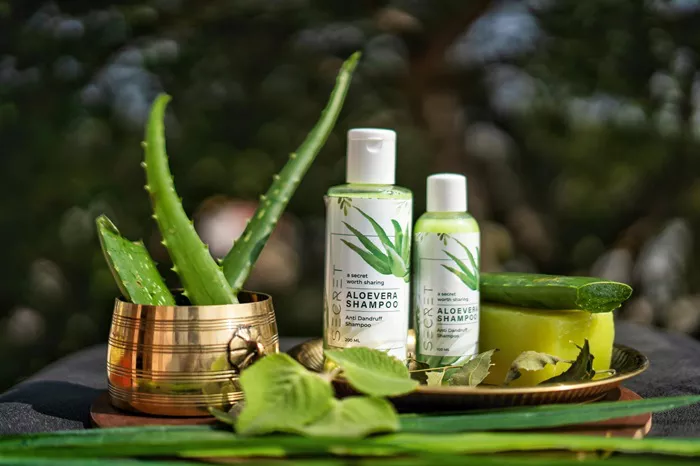Sulfate-free shampoos have become popular in recent years. Many people now prefer them over traditional shampoos. But what makes sulfate-free shampoos different? This essay explains everything you need to know about sulfate-free shampoos. We will discuss what sulfates are, why people avoid them, the benefits of sulfate-free formulas, key ingredients to look for, and how to choose the best shampoo for your hair type.
By the end, you will understand why sulfate-free options might be the right choice for you.
What Are Sulfates?
Sulfates are chemicals used in shampoos to create a foamy lather. They act as detergents, helping to remove dirt, oil, and product buildup from hair. The most common sulfates in shampoos are:
- Sodium Lauryl Sulfate (SLS)
- Sodium Laureth Sulfate (SLES)
These ingredients are effective cleansers but can be harsh. Sulfates work by breaking down oils on the scalp and hair. However, they may also strip away natural oils, leading to dryness or irritation.
Why Do People Avoid Sulfates?
Not everyone needs to avoid sulfates, but certain hair types or conditions benefit from sulfate-free products. Here are five reasons people switch:
1. Dry or Damaged Hair
Sulfates can remove too much natural oil, leaving hair dry and brittle. This worsens split ends or breakage.
2. Color-Treated Hair
Sulfates fade hair dye faster. People with colored hair often use sulfate-free shampoos to protect their investment.
3. Curly or Frizzy Hair
Curly hair tends to be dry. Sulfates can increase frizz by stripping moisture.
4. Sensitive Scalp
Sulfates may cause itching, redness, or flaking in people with eczema, psoriasis, or allergies.
5. Environmental Concerns
Some sulfates are derived from petroleum and may harm aquatic life when washed down drains.
Benefits of Sulfate-Free Shampoos
Switching to sulfate-free shampoos offers several advantages:
Gentle Cleansing
They clean without stripping natural oils, keeping hair softer and healthier.
Long-Lasting Hair Color
Sulfate-free formulas help dye molecules stay in hair longer.
Reduced Frizz
By preserving moisture, these shampoos enhance curl definition and reduce flyaways.
Safer for Sensitive Skin
Mild ingredients lower the risk of scalp irritation.
Environmentally Friendly
Many sulfate-free brands use biodegradable, plant-based ingredients.
Key Ingredients in Sulfate-Free Shampoos
Since sulfates aren’t used, brands rely on gentler surfactants (cleansing agents). Common alternatives include:
Decyl Glucoside
Derived from corn and coconut, it cleans without irritation.
Cocamidopropyl Betaine
Made from coconut oil, it creates a mild lather.
Sodium Lauroyl Sarcosinate
A soft, foam-producing ingredient suitable for delicate hair.
Coconut Oil or Shea Butter
Added to sulfate-free shampoos to moisturize and protect hair.
Aloe Vera or Oat Extract
Soothe the scalp and reduce inflammation.
How to Choose the Right Sulfate-Free Shampoo
Not all sulfate-free shampoos work the same. Consider your hair type:
For Oily Hair
Look for clarifying ingredients like tea tree oil or charcoal.
For Dry Hair
Choose formulas with oils (argan, coconut) or hyaluronic acid.
For Curly Hair
Pick shampoos with shea butter or glycerin to lock in moisture.
For Color-Treated Hair
Opt for pH-balanced shampoos with UV protectants.
For Fine Hair
Avoid heavy oils; try volumizing agents like rice protein.
Popular Sulfate-Free Shampoo Brands
SheaMoisture
Uses natural oils and butters for curly or dry hair.
OGX
Offers affordable options like coconut milk or argan oil shampoos.
Pureology
Professional-grade formulas for color-treated hair.
Briogeo
Clean ingredients suited for sensitive scalps.
Aveeno
Contains oat extract to soothe irritation.
How to Use Sulfate-Free Shampoos Effectively
Wet Hair Thoroughly
Ensure water reaches all sections of your hair.
Use Less Product
Sulfate-free shampoos are concentrated; a small amount works.
Massage Gently
Focus on the scalp to stimulate blood flow.
Rinse Well
These shampoos may leave residue if not rinsed properly.
Follow with Conditioner
Always condition to seal in moisture.
Addressing Common Concerns
Low Lather
Sulfate-free shampoos don’t foam much, but they still clean effectively.
Transition Period
Your hair may feel greasy for 1–2 weeks as it adjusts to gentler cleansing.
Cost
Sulfate-free shampoos are often pricier, but they prevent long-term damage.
Conclusion
Sulfate-free shampoos are a smart choice for anyone seeking healthier hair or a sensitive scalp. They cleanse gently, protect color, and reduce frizz. By selecting the right formula for your hair type and using it correctly, you can enjoy stronger, shinier locks. Always check ingredient labels and consult a stylist if unsure. Making the switch could be the key to unlocking your hair’s natural beauty!
Related topics:
When Can You Shave Donor Area After Hair Transplant?
6 Best Sulfate-Free Shampoos in 2025


